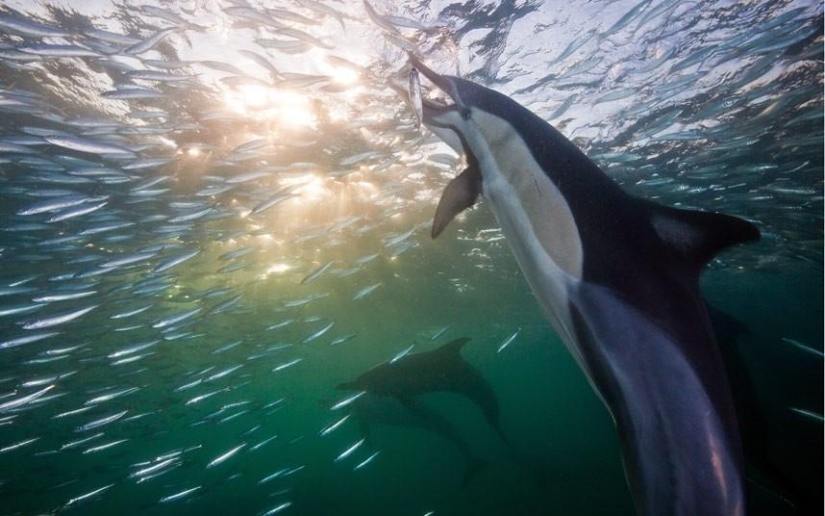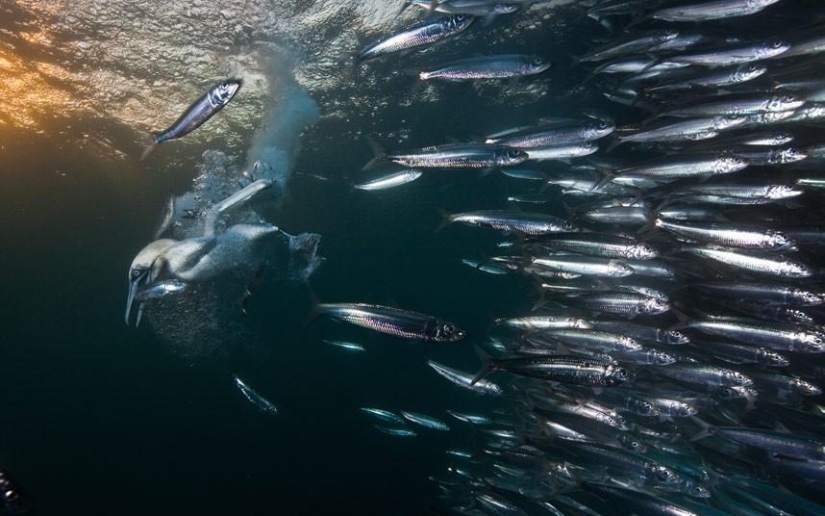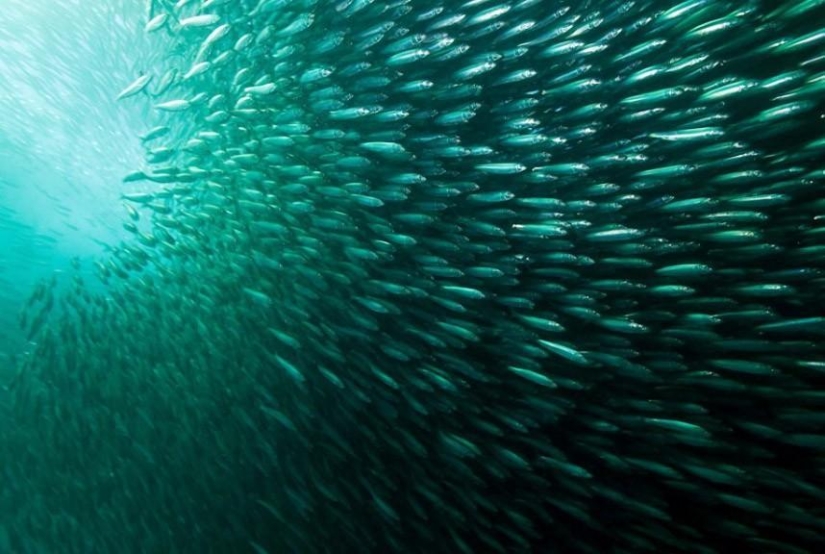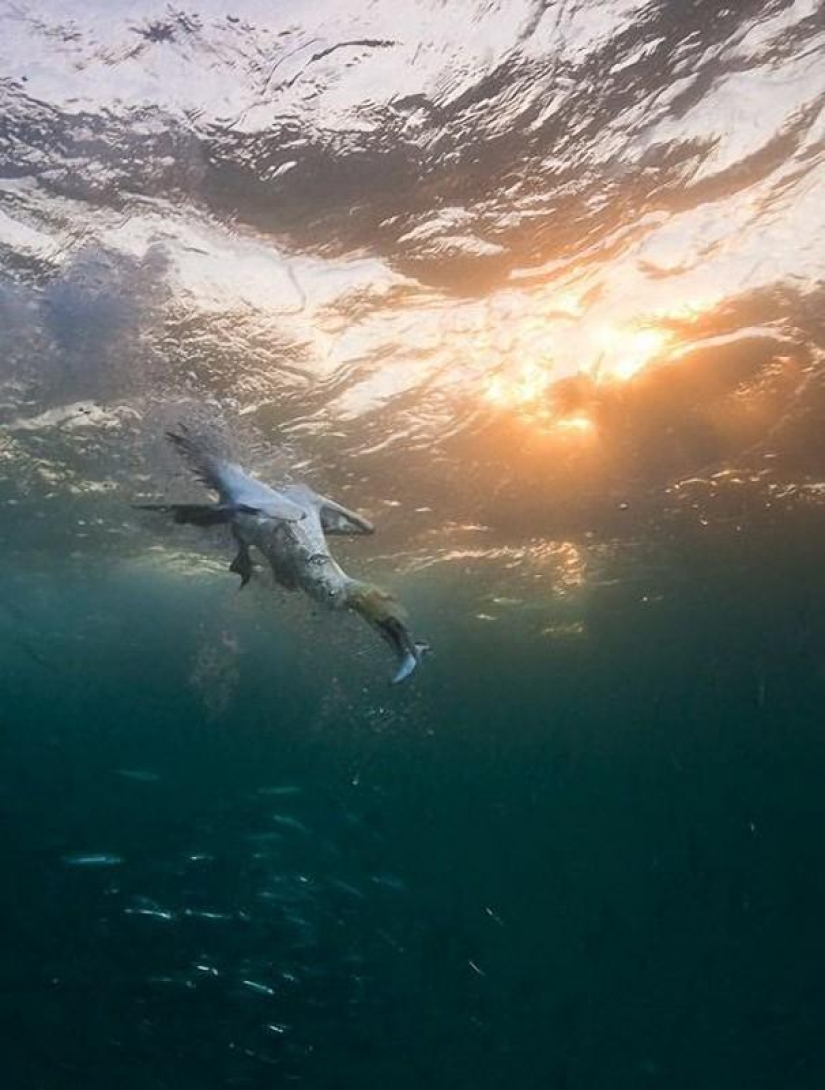Migration of sardines in South Africa
Sardine migration is a natural phenomenon that occurs from late May to late July off the southeast coast of South Africa, when huge schools of sardines spawn in the cool waters off Cape Agulhas, swim north and go into the ocean.
This event annually attracts divers and aquaphotographers from all over the world, and Cape Town-based African photographer Mark van Koller simply could not stay away.
(Total 13 photos)


1. Thousands of sardines swim around the shark during the annual migration of sardines to spawn.

2. Photographer Mark van Koller managed to capture the movement of sardines along the coast of South Africa.

3. Predators know where and when the fish migrate, and come to this place to profit from easy prey.

4. Here you can see sharks, dolphins and even cormorants that hunt migratory fish.

5. Mark van Koller, who lives in Cape Town, made a special trip to Port St. John's to see the seasonal fish migration in June.

6. Koller explains: “Sardines need cold water, so they follow cold currents up the coast.”

7. "... cold water enters the warm Agulhas current, which moves from the tropics ..."

8. “…this causes the sardines to cluster in tight groups to stay in the cold water.”

9. “To protect against predators, sardines form a so-called ball (English bait-ball) ...”

10. "... sharks, dolphins and cormorants take advantage of this behavior of sardines and catch prey with ease."

11. The photographer also adds: “You can’t predict what will happen in the next moment – the sardines are moving too fast…”

12. "...and you'll never know what you've photographed until you download the photos to your computer."

13. He concludes by saying: “My job is to find a solid, stationary ball from which the sardines cannot escape. I am present every year at the migration of sardines and I hope that one day I will be able to capture truly unique shots.”
Keywords: Migration | Fish | South africa
Post News ArticleRecent articles

The invention of flying machines that allow people to travel into the Earth's atmosphere is a list of the greatest innovations of ...

Sex — is not only enjoyable, but also a very useful exercise. Orgasm improves the General condition of the organs and ...
Related articles

Human intervention in the affairs of nature is extremely rarely successful. Especially a lot of trouble was brought to the ...

Have you ever noticed that if you turn a photo of a human face upside down, what you see seriously resembles the physiognomy of a ...

Beautiful decoration of dishes is no less important than its taste. People first "eat" with their eyes, and only then try what is ...

American photographer David LaChapelle is often compared to Federico Fellini—and this comparison is no coincidence. Just as the ...